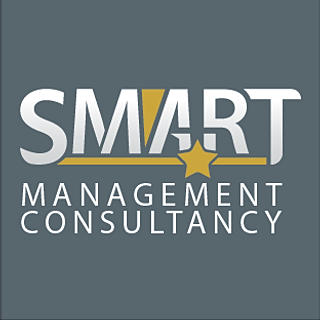Risk Management Software: A Comprehensive Guide
- Smart Management Consultancy
- 2 days ago
- 4 min read
In today’s fast-paced business environment, managing risks effectively is crucial for success. Companies face a variety of risks daily, from financial uncertainties to operational challenges and compliance issues. To navigate these complexities, many organizations turn to software for risk management. This guide explores the essentials of risk management software, its benefits, key features, and how to choose the right solution for your business.
Understanding Software for Risk Management
Risk management software is designed to help organizations identify, assess, and mitigate risks systematically. It provides tools to monitor potential threats and vulnerabilities, enabling proactive decision-making. This type of software streamlines the risk management process by automating data collection, analysis, and reporting.
Why Use Software for Risk Management?
Improved Accuracy: Manual risk assessments can be prone to errors. Software solutions use algorithms and data analytics to provide precise risk evaluations.
Time Efficiency: Automating routine tasks saves time, allowing teams to focus on strategic risk mitigation.
Centralized Data: All risk-related information is stored in one place, making it easier to track and update.
Regulatory Compliance: Many industries require strict adherence to regulations. Risk management software helps ensure compliance by maintaining audit trails and documentation.
For example, a manufacturing company can use risk management software to monitor equipment maintenance schedules and predict potential failures before they occur, reducing downtime and costs.

Key Features of Risk Management Software
When selecting software for risk management, it’s important to understand the features that will best support your organization’s needs. Here are some essential features to look for:
Risk Identification and Assessment
The software should allow users to log and categorize risks easily. It should support qualitative and quantitative risk assessments, helping to prioritize risks based on their potential impact and likelihood.
Risk Mitigation Planning
Effective software provides tools to develop and assign mitigation strategies. This includes setting deadlines, assigning responsibilities, and tracking progress.
Real-Time Monitoring and Alerts
Continuous monitoring of risk indicators is vital. The software should send alerts when risk levels change or when mitigation actions are overdue.
Reporting and Analytics
Comprehensive reporting capabilities help stakeholders understand risk exposure and the effectiveness of mitigation efforts. Customizable dashboards and visualizations make data easier to interpret.
Integration Capabilities
The ability to integrate with other business systems such as ERP, CRM, or compliance software enhances data accuracy and workflow efficiency.
User-Friendly Interface
A simple, intuitive interface encourages adoption across departments and reduces training time.
How to Choose the Right Risk Management Software
Selecting the right software depends on your organization’s size, industry, and specific risk management requirements. Here are some practical steps to guide your decision:
1. Define Your Risk Management Goals
Identify what you want to achieve with the software. Are you focusing on compliance, operational risks, financial risks, or all of these? Clear goals will help narrow down options.
2. Evaluate Software Scalability
Choose a solution that can grow with your business. Scalability ensures the software remains effective as your risk landscape evolves.
3. Consider Customization Options
Every business has unique risks. Look for software that allows customization of risk categories, workflows, and reports.
4. Check Vendor Support and Training
Reliable customer support and training resources are essential for smooth implementation and ongoing use.
5. Review Security Features
Since risk management involves sensitive data, ensure the software has robust security measures like encryption and access controls.
6. Request Demos and Trials
Hands-on experience with the software helps assess usability and fit for your team.
By following these steps, you can select a risk management tool that aligns with your operational needs and strategic objectives.

Practical Benefits of Implementing Risk Management Software
Implementing risk management software offers tangible benefits that can transform how your organization handles risks:
Enhanced Decision-Making: Access to real-time data and analytics supports informed decisions.
Cost Savings: Early identification of risks prevents costly incidents and downtime.
Improved Collaboration: Centralized platforms facilitate communication across departments.
Regulatory Readiness: Automated compliance tracking reduces the risk of penalties.
Increased Transparency: Clear documentation and audit trails build trust with stakeholders.
For instance, a financial services firm using risk management software can quickly identify emerging market risks and adjust investment strategies accordingly, protecting client assets.
Exploring Risk Management Software Solutions
To maximize the benefits of risk management, consider exploring specialized risk management software solutions that offer comprehensive features tailored to various industries. These solutions often include modules for risk assessment, compliance management, incident tracking, and reporting, all integrated into a single platform.
Choosing a reputable provider ensures you receive ongoing updates, support, and access to the latest risk management technologies. This investment can significantly enhance your organization's resilience and ability to respond to challenges.
Moving Forward with Risk Management Software
Adopting software for risk management is a strategic step toward safeguarding your organization’s future. By leveraging technology, you can transform risk management from a reactive task into a proactive, value-adding process.
Start by assessing your current risk management practices and identifying gaps that software can fill. Engage stakeholders across departments to understand their needs and ensure buy-in. With the right software in place, your organization will be better equipped to anticipate risks, respond effectively, and seize opportunities with confidence.
Remember, risk management is an ongoing journey. Continuously review and update your risk strategies and software tools to stay ahead in an ever-changing business landscape.















Comments